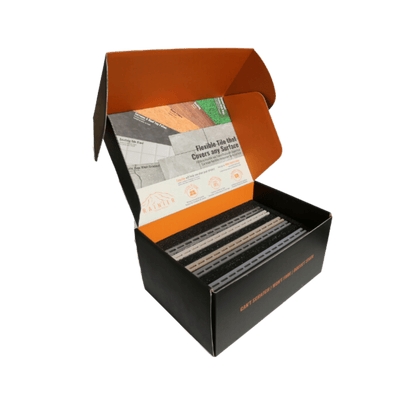Building a deck requires precision and durability, both of which hinge largely on the tools used. With the right set of tools, you can ensure that every component of your deck is measured, cut, and assembled accurately, which significantly extends the lifespan of your deck and enhances its appearance. Quality tools minimize the risks of errors and injuries, making the installation process smoother and safer. This blog post is designed for both professionals and avid DIYers who are planning to undertake deck installation projects. Whether you're building a small deck for your backyard or a large outdoor area for a client, the tools listed here will cover every aspect of the installation process. From initial measurements to the final touches of paint, this guide will help you choose the best tools to create a durable and visually appealing deck.
Read more: How to lay paving stones
Measuring Tools for Deck Installation
Accurate measurements are the foundation of any successful deck installation. Here are the essential measuring tools you'll need:
- Tape Measure: A must-have in any tool kit, a reliable tape measure is used to determine the length and width of the deck area, ensuring that all materials fit perfectly. Choose a durable, easy-to-read tape measure that can lock and retract smoothly.
- Square and Level: These tools are critical for verifying that all angles and corners are 90 degrees and that every surface is perfectly horizontal or vertical. A carpenter's square helps in marking precise cut lines, while a level ensures your deck’s foundation is flat and stable.
- Chalk Line: Ideal for marking long, straight lines over distances where a tape measure won’t suffice. This tool is particularly useful when laying out the initial boundaries of the deck or aligning posts. Simply snap the line coated with chalk to leave a straight guide mark on your work surface.
Each of these tools plays a vital role in ensuring that your deck is well-proportioned, level, and structurally sound.
Read more: How to Layout Deck Stairs Stringers
Cutting Tools for Deck Installation
Selecting the right cutting tools can greatly affect the efficiency and quality of your deck installation. Here are three essential cutting tools every deck builder should have:
- Circular Saw: A versatile tool, the circular saw is perfect for making quick, straight cuts through decking boards and framing materials. It's particularly useful for cutting large quantities of wood to the same length efficiently, which is common in deck construction.
- Miter Saw: Ideal for precision cutting, the miter saw allows for accurate angled and beveled cuts. This is essential for creating clean, tight joins, especially in deck railings and steps where angles must be exact to ensure a professional appearance and structural integrity.
- Jigsaw: The jigsaw is indispensable for cutting intricate shapes and curves. When you need to cut around obstacles like posts or fit decking around curved landscaping features, a jigsaw makes the job easier and more precise, ensuring a neat finish.
Each of these tools addresses specific needs during deck building, from quick rough cuts to detailed finish work, making them invaluable for both novice and experienced builders alike.
Read more: How to Build a Ground-level Deck
Fastening Tools for Deck Installation
Proper fastening is crucial for constructing a sturdy and durable deck. Here are the essential tools you’ll need for effective fastening:
- Power Drill: An indispensable tool, the power drill not only drills pilot holes but also drives screws quickly and efficiently. It's adaptable with various bits and attachments, making it suitable for nearly all fastening tasks in deck construction. Opt for a cordless model for easier maneuverability and convenience.
- Screwdriver Set: Even with the convenience of a power drill, a set of screwdrivers is essential for finer, manual adjustments or in places where a power drill is too cumbersome. Ensure your set includes a range of sizes and head types (flat and Phillips) to match the screws used throughout your deck building.
- Nail Gun: Greatly accelerating the process of nailing, a nail gun is a time-saver when securing large areas of decking or framing. It provides a consistent driving depth, which is crucial for the structural integrity and appearance of the deck.
These fastening tools are designed to enhance efficiency and ensure that every component of the deck is securely attached, contributing to the overall strength and lifespan of your deck.
Read more: Step-by-step process to cutting your paving stones
Framing Tools for Deck Installation
Framing is a critical phase in deck building, requiring tools that ensure the structure's integrity and alignment. Here are the essential tools needed for framing a deck:
- Hammer: A basic yet indispensable tool, the hammer is used for driving nails into the deck’s framing. Choose a hammer that’s durable and comfortable to hold, preferably with a smooth face to minimize damage to surfaces.
- Framing Square: This tool is crucial for ensuring all angles are square and that the components of your deck frame are properly aligned. A framing square helps in laying out stairs, checking corners, and other tasks requiring precise angles.
- Leveling Tools: To ensure your deck has even, stable surfaces, leveling tools like spirit levels or laser levels are essential. They verify that posts, joists, and other structural elements are horizontally or vertically aligned, which is vital for both safety and functionality.
Together, these tools help in constructing a robust and precisely aligned deck frame, laying a solid foundation for the entire deck structure.
Read more: How to Remove Moss Algae from Deck
Safety Equipment for Deck Installation
Safety should always be a priority during any construction project, including deck installation. Here are essential pieces of safety equipment that protect against common hazards:
- Safety Goggles: Protecting your eyes is crucial when cutting, drilling, or handling materials that might splinter or shatter. Safety goggles provide a barrier against flying debris, dust, and splinters, ensuring your vision is safeguarded throughout the project.
- Hearing Protection: Power tools, especially saws and drills, can generate harmful noise levels that may lead to hearing damage over time. Use earplugs or earmuffs to protect your hearing during extended periods of loud noise exposure. Choose a comfortable, high-rated option to ensure effective noise reduction.
- Work Gloves: Durable work gloves protect your hands from splinters, cuts, and abrasions while handling rough materials and tools. They also provide better grip and prevent blisters during manual labor. Opt for gloves that offer both protection and dexterity, allowing you to perform precise tasks without needing to remove them.
Equipping yourself with these safety items not only minimizes the risk of injuries but also enhances your comfort and efficiency when working on your deck installation.
Read more: How to Hang Lights on Your Deck for a Stunning Outdoor Ambiance
Surface Preparation Tools for Deck Installation
Proper surface preparation can significantly improve the longevity and appearance of your deck. Here are key tools to prepare your decking surface effectively:
- Sander: Before finishing your deck, it’s crucial to smooth out all surfaces. A power sander can efficiently remove old paint, smooth rough edges, and level any high spots on the wood. For best results, use a variety of sandpaper grits to progressively achieve a smoother finish.
- Scraper: A good scraper is indispensable for removing peeling paint, varnish, or old stain from deck boards. This tool is especially useful for spot treatments and preparing the wood for a new coat of paint or stain, ensuring better adhesion and a neater appearance.
- Pressure Washer: A pressure washer is the most effective tool for cleaning large deck surfaces quickly. It removes dirt, mold, mildew, and old finishes from wood, providing a clean surface for painting or staining. Use a suitable pressure setting to avoid damaging the wood fibers, especially on softer woods.
Utilizing these tools not only ensures that your deck is clean and smooth but also helps in achieving a more durable and aesthetically pleasing finish once stained or painted.
Read more: How to Pressure Wash Your DeckFinishing Tools for Deck Installation
Achieving a professional and durable finish on your deck requires the right tools. Here are essential finishing tools to ensure your deck not only looks great but also stands up to the elements:
- Paintbrushes and Rollers: For applying paints and stains, high-quality brushes and rollers are indispensable. Brushes are perfect for detailed work and getting into tight spaces, while rollers can cover large, flat areas quickly and evenly. Opt for synthetic bristles for water-based products and natural bristles for oil-based finishes to achieve the best results.
- Stain Applicators: Stain applicators, such as pads, sponges, or sprayers, are designed to provide a smooth, even coat of stain, which is vital for both appearance and wood protection. They help in achieving deeper penetration of the stain into the wood, enhancing both the longevity and the aesthetic of the deck.
- Caulking Gun: A caulking gun is used to apply caulk or sealant to joints, cracks, and gaps in the deck structure, preventing moisture penetration and wood rot. It is crucial for maintaining the structural integrity and prolonging the life of your deck.
Using these tools effectively will help ensure your deck's finish is smooth, sealed, and beautifully completed, enhancing both its appearance and durability.
Read more: How to Remove Paint From Deck Without Chemicals
Maintenance Tools for Deck Installation
Regular maintenance is key to extending the life and preserving the appearance of your deck. Here are essential tools and supplies to keep your deck in top condition:
- Cleaning Supplies: Include a variety of brushes, cleaners, and soaps specifically designed for deck care. A stiff brush can remove debris and dirt from between boards, while specialized deck cleaners help remove stains and mildew. For routine cleaning, a mild soap and water solution can be used to keep the deck surface fresh and clean.
- Repair Kits: Handy for addressing minor damage and wear, repair kits should include items like wood filler, sandpaper, and matching stain or paint. These kits allow you to quickly fix scratches, chips, or splinters, helping to prevent further deterioration and maintaining the deck’s aesthetic appeal.
- Replacement Parts: Keep a stock of critical replacement parts such as screws, nails, and boards that match your deck. Over time, some parts of the deck may need to be replaced due to wear or weather damage. Having these on hand ensures quick repairs and consistent maintenance.
Armed with these tools, you can effectively manage routine cleaning and repairs, ensuring your deck remains a durable and attractive outdoor living space.





